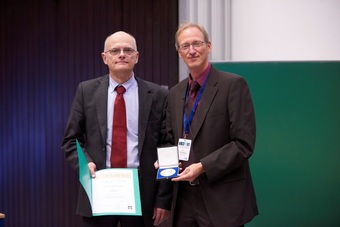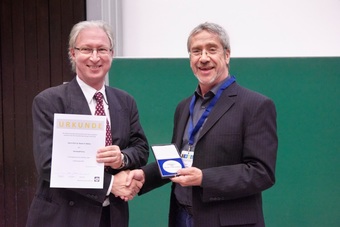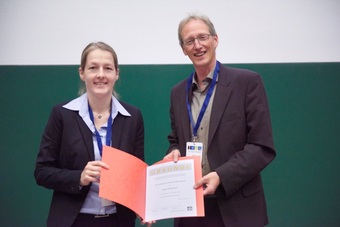Physics Department hosts two conferneces on "soft matter"
48th general meeting of the German Colloid Society with the topic “Multi-responsive Systems”
3rd Workshop “Fluorescence Correlation Spectroscopy in Soft Matter Science”
2017-11-02 – News from the Physics Department
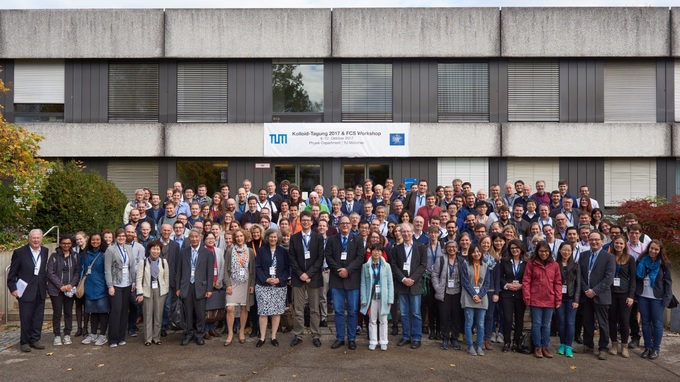
The German “Kolloid-Gesellschaft”, one of the oldest scientific associations, held its biennial general meeting at TUM. “Colloids” are mixtures in which insoluble microscopic particles of one substance are suspended throughout another substance. Apart from fundamental research, colloids play an important role in pharmacy as well as in nutrition science and the cosmetics industry. As an example, milk is a complex mixture of different colloids and other substances in water.
This year’s colloid conference had the topic “multi-responsive systems” – an interdisciplinary research field that gets a lot of attention here in Garching, at the departments for physics and chemistry as well as at the Heinz Maier-Leibnitz Zentrum. The conference and workshop were organized by Christine M. Papadakis (TUM), Peter Müller-Buschbaum (TUM) and Dominik Wöll (RWTH Aachen).
Responsive (“smart”) materials react to an outer stimulus (e.g. a small change of temperature or of the pH value) with a strong change of their volume or their structure, for instance. Multiresponsive systems respond to several stimuli and are based on the combination of several, differently responsive polymers or colloids. They offer numerous applications, e.g. as injectable gels for medical drug delivery or as smart emulsifiers.
These challenges were discussed at this year’s general meeting by about 150 scientists who participated, half of which were master and PhD students. Excellent talks were given by a range of internationally outstanding scientists. At the conference dinner in Augustinerkeller, the Ramersdorfer Tanzlmusi played traditional Bavarian music, and the participants enjoyed Bavarian beer and food.
Awards of the Colloid Society
(All Photos: W. Schürmann/TUM)
The awards of the Colloid Society were presented at the conference:
- the Ostwald award to Reinhard Lipowsky (MPI für Kolloid- und Grenzflächenforschung, Potsdam),
- the Steinkopff award to Rainer H. Müller (FU Berlin),
- the Liesegang award to Regine von Klitzing (TU Darmstadt) and
- the Zsigmondy grant to Annette Andrieu-Brunsen (TU Darmstadt).
- Mitsuhiro Shibayama (University of Tokyo, Japan) held the Springer Lecture.
- The Springer poster award was given to Qimeng Song (University of Siegen).
3rd Workshop FCS in Soft Matter Science
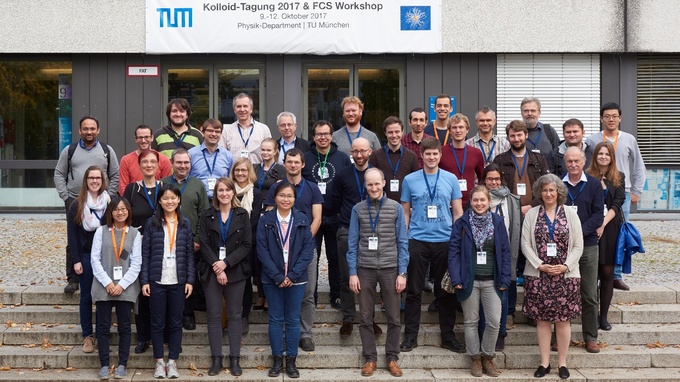
Fluorescence correlation spectroscopy (FCS) is an extremely sensitive method for spatially resolved determination of the dynamics in soft matter. Thus it is well-suited to investigate multi-responsive systems. More than 40 scientists and students participated in this one-day workshop, which was characterized by intense and fruitful discussions about the possibilities of this method in the fields of polymer, colloid and life sciences. Among others, fluorescence correlation spectroscopy may be used to characterize the dynamic properties of artificial cell membranes or to investigate the effect of blood proteins on polymeric nanoparticles which are used for chemotherapy.
Further information
- Homepage of the conferences: http://www.kolloid17.ph.tum.de
- Conference report
- Kolloid-Gesellschaft (Colloid Society)
The organizers:
